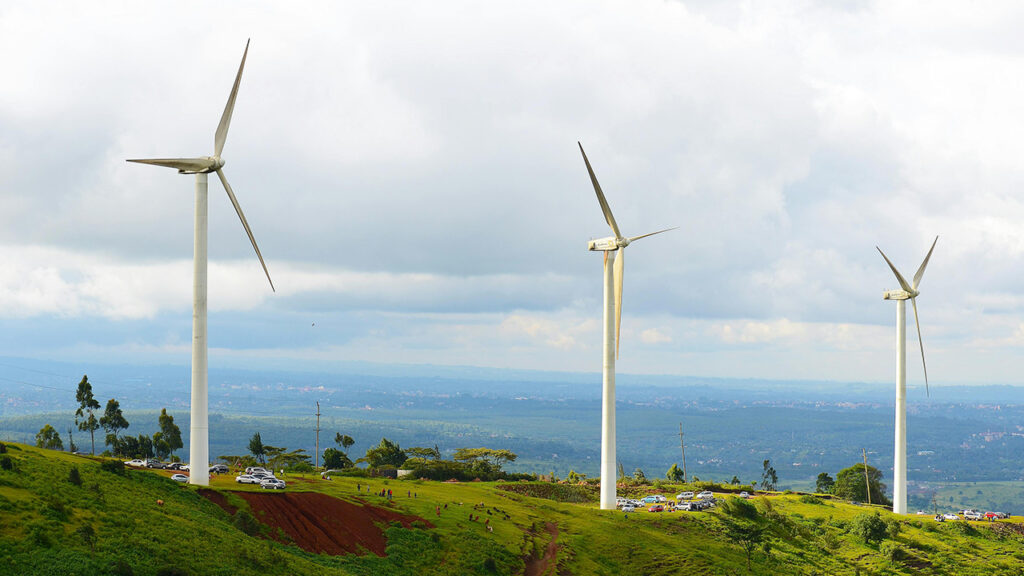
How can weather and climate forecasting help renewable energy in East Africa?
New insights from the POWER-Kenya project show sub-seasonal forecasts could transform energy resilience in Kenya.
As East Africa transitions toward a low-carbon future, renewable energy sources such as wind, solar, and hydropower are playing an increasingly critical role in national development strategies. These sources of energy are inherently weather-dependent, making power systems vulnerable to climate variability, low winds, increased cloud cover, and droughts.
A new collaborative research initiative, known as POWER-Kenya, is investigating how sub-seasonal weather forecasts (typically 2 to 4 weeks ahead) can inform Kenya’s strategy for a resilient renewable energy supply.
Climate science meets local expertise
Launched in early 2025, POWER-Kenya brings together climate scientists, operational forecasters, and energy stakeholders the UK and Kenya.
The team is co-developing decision-relevant climate services tailored to the energy sector, with a strong emphasis on co-production – a process that engages stakeholders throughout the research to ensure relevance and usability.
“At the heart of the project is the goal to better understand and predict energy stress events, which are periods when energy supply is threatened by unfavourable weather. For Kenya, this often means identifying and anticipating low wind periods, which we sometimes refer to as wind droughts, reduced solar radiation due to cloud cover, or extended periods without rain. These conditions can significantly hinder electricity generation from renewables,” explains Dr Linda Hirons, research scientist at the National Centre for Atmospheric Science and University of Reading.
She adds: “Earlier this year, in March, we held a POWER-Kenya kick-off workshop in Nairobi to engage with local stakeholders including Kenya Electricity Generating Company, Kenya Meteorological Department, the Ministry of Energy and other energy decision-makers. Together, we’re co-defining what constitutes an energy stress event, prioritising wind and solar sectors due to their growing importance in Kenya’s energy generation mix.”
Harnessing forecasting for renewable energy security
Research is now underway to calibrate wind and solar prediction models using local data provided by the Kenya Electricity Generating Company, including detailed station measurements.
Early results show that large-scale climate phenomena like the El Niño-Southern Oscillation (ENSO) and the Indian Ocean Dipole (IOD) have significant but regionally variable impacts on wind power potential in Kenya. For instance, El Niño conditions tend to reduce wind speeds over the Turkana region during October to December, while La Niña phases tend to enhance them. These variations can meaningfully impact grid stability and power planning.
There is also a compounding effect when ENSO and IOD events coincide. For example, El Niño events combined with a positive IOD can significantly reduce wind speeds, amplifying the risk to energy supply. These insights demonstrate the critical need for operational forecasts to integrate multiple climate drivers, and highlight the potential of sub-seasonal forecasting to inform energy system planning.
The project draws lessons from previous work on climate services in Africa, reinforcing the value of capacity building and direct data access for national meteorological and hydrological services.
Linda says: “Giving Kenyan forecasters direct access to data, and involving them in co-developing tools and thresholds, has been transformational. It allows them to produce information that is truly aligned with user needs.”
Looking ahead, POWER-Kenya will continue to refine predictive tools, test their accuracy against real-world events, and support operational uptake within Kenya’s energy sector.
By integrating state-of-the-art climate science with local expertise and needs, POWER-Kenya offers a promising model for how East Africa can harness the power of forecasting to ensure a reliable, renewable-powered future for households and businesses.
The POWER-Kenya project, centered on accurate forecasting of wind and solar energy potential, will be pivotal in transforming Kenya’s energy landscape by enhancing grid stability, optimizing energy storage while ensuring a more reliable electricity supply, lowering operational costs and enabling the country to fully harness its abundant renewable resources hence unlocking greater clean energy potential and advancing toward a resilient, low-carbon future for sustainable development.
Professor Christopher Oludhe, senior researcher specialising in renewable energy resources and technology at the University of Nairobi
Acknowledgements
The Potential of sub-seasonal Operational Weather and climate information for building Energy Resilience in Kenya (POWER-Kenya) project is funded by the Natural Environment Research Council.
POWER-Kenya involves the University of Nairobi, University of Reading, Newcastle University, University of Leeds, Kenya Electricity Generating Company, and is led by the National Centre for Atmospheric Science.
Image is of KenGen Ngong Wind Farm. Ngong Hills, near Nairobi. Kenya.
